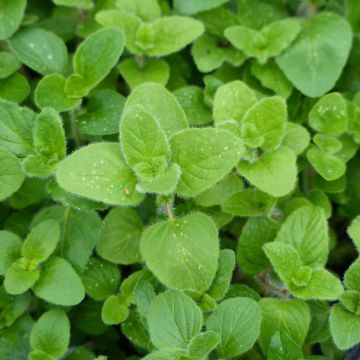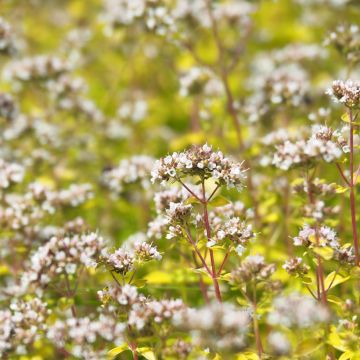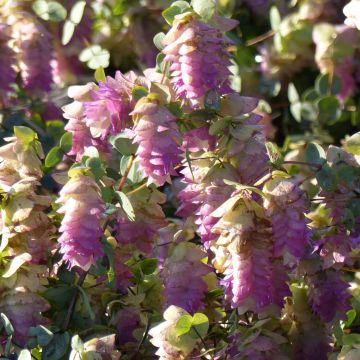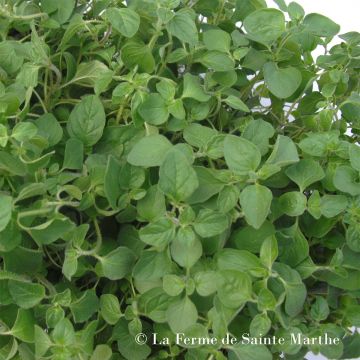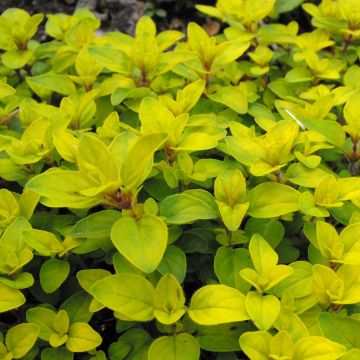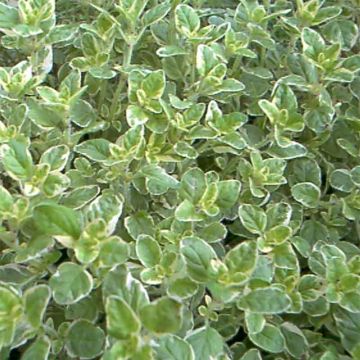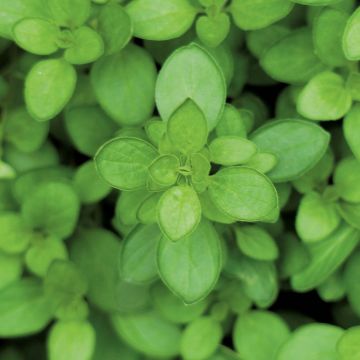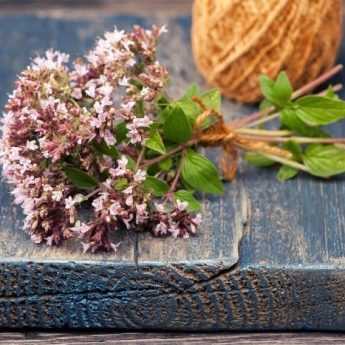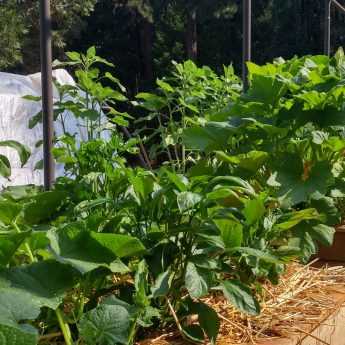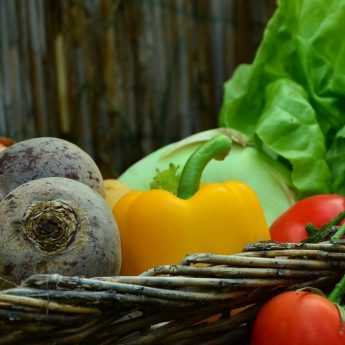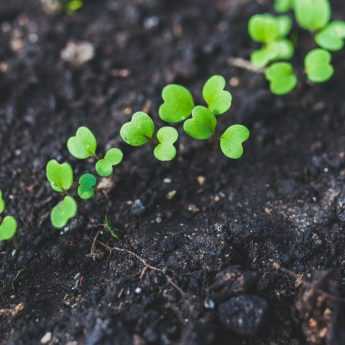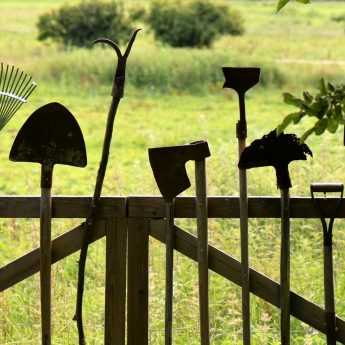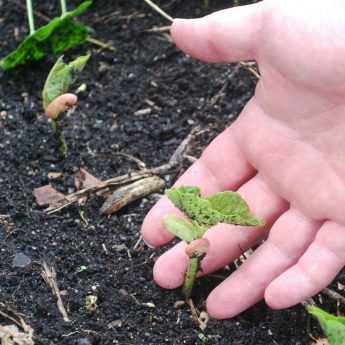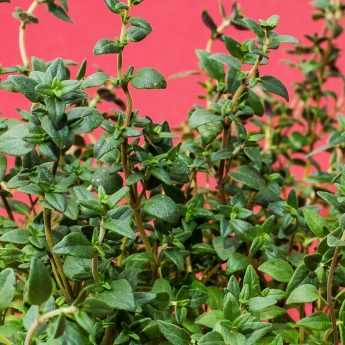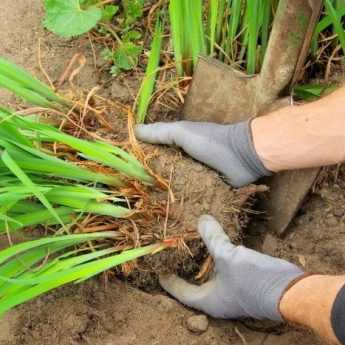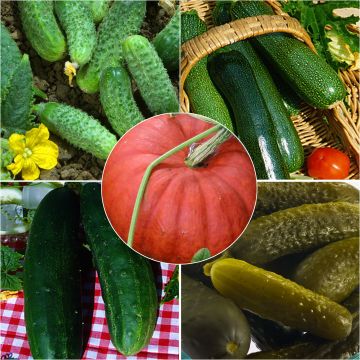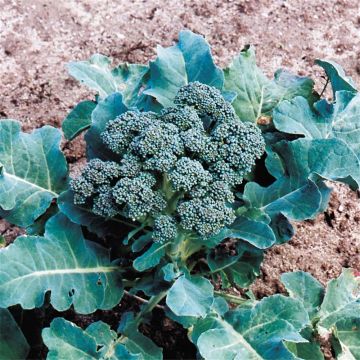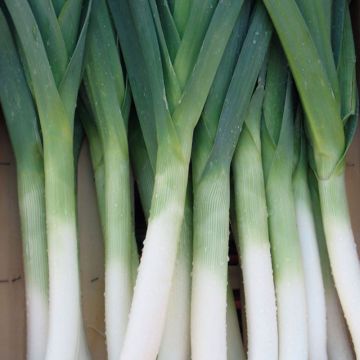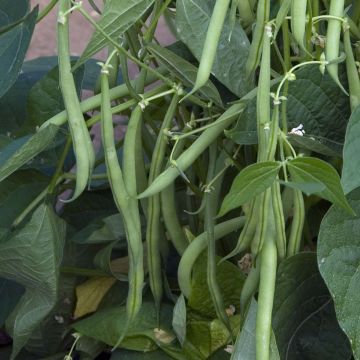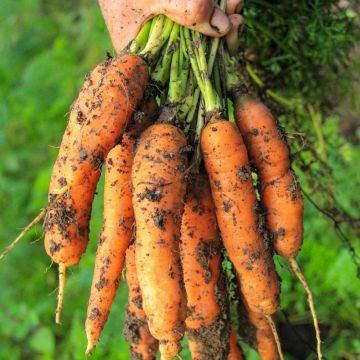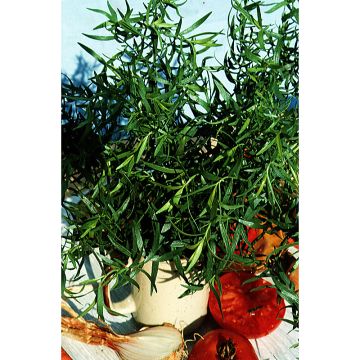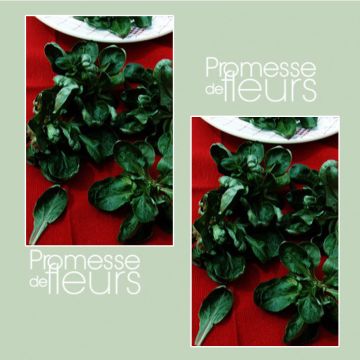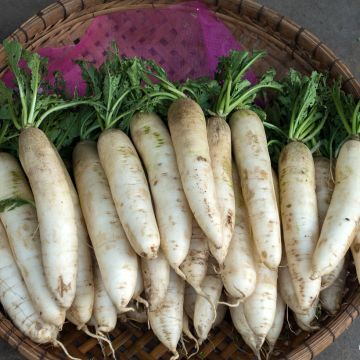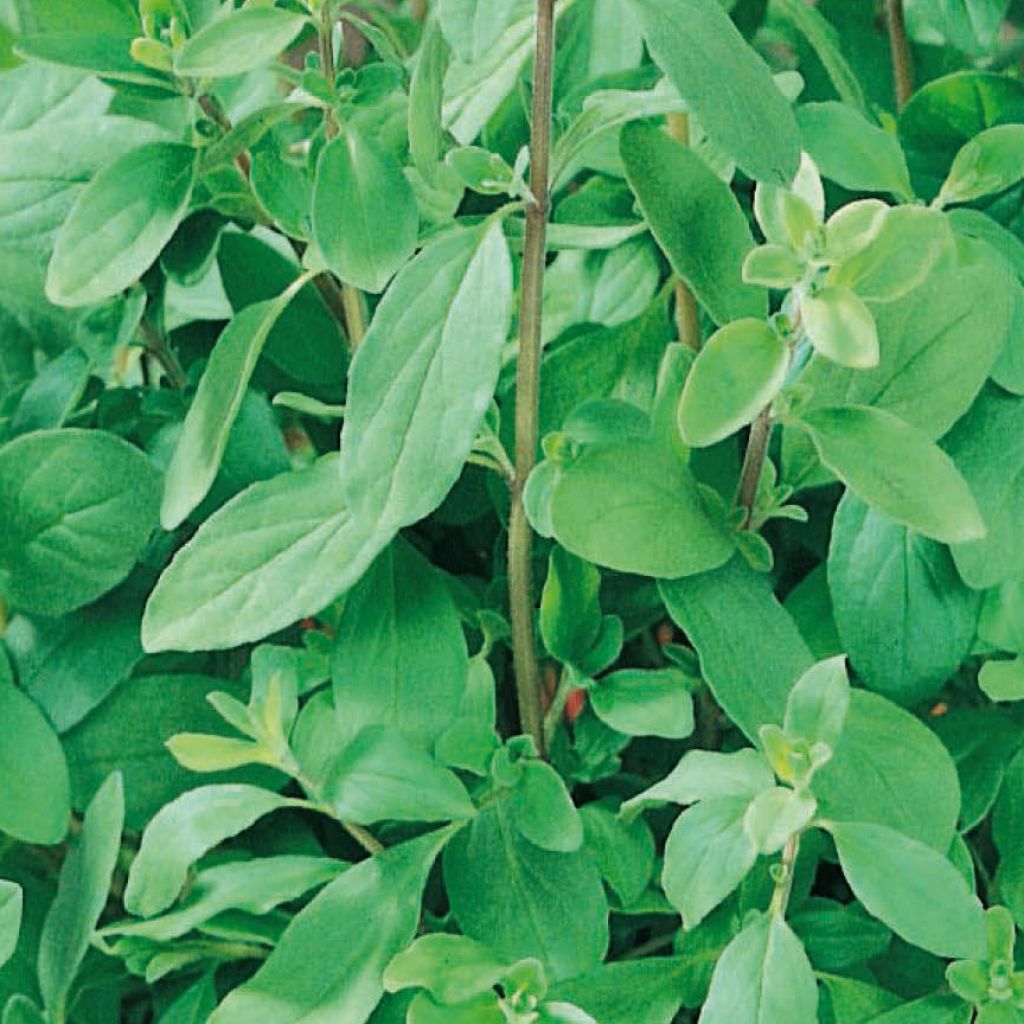

Marjolaine vivace - Origan
Origanum majorana
Origanum majorana
Sweet Marjoram, Knotted Marjoram
This item cannot be shipped to the selected country
Dispatch by letter from €3.90
More information
Dispatch by letter from €3.90
More information
Schedule delivery date,
and select date in basket
This plant carries a 6 months recovery warranty
More information
We guarantee the quality of our plants for a full growing cycle, and will replace at our expense any plant that fails to recover under normal climatic and planting conditions.
Seed-only orders are dispatched by sealed envelope. The delivery charge for seed-only orders is €3.90.

Description
The perennial marjoram (Origanum) is a hardy aromatic plant that is part of the traditional Herbes de Provence. It is a classic of Mediterranean cuisine, especially Italian cuisine, and is irreplaceable for flavouring pizzas. Sow indoors from April to June and harvest as needed from July to September.
Native to western and southern Europe, where it is found in the wild, Origanum majorana is a perennial plant belonging to the Lamiaceae family. It forms a fragrant clump about 50cm (20in) tall and wide. Its deciduous foliage is composed of round to ovate, dark green leaves. From June to September, Origanum blooms with pretty pink flowers that can vary in colour. It is hardy down to about -17°C (1.4°F).
Origanum is a resilient and easy-to-grow herb. It thrives in sunny locations and prefers poor, light, even rocky, and well-drained soils. It is not afraid of limestone. If your soil is rather damp and clayey, we recommend growing it in a pot or on a small mound where it will thrive.
It is worth noting that Origanum is also known as Wild Marjoram or Red Tea, which often leads to confusion with its cousin, Garden Marjoram or Sweet Marjoram (Origanum majorana), which is less hardy and has a different scent.
Harvest: Origanum is harvested from July to September by cutting off branches with scissors.
Preservation: Origanum is traditionally preserved by drying. This is a simple and quick process that you can replace with freezing if you find it more convenient.
The gardener's tip: In the garden, don't hesitate to mix different types of plants by placing some herbs like Origanum in the middle of your perennial borders or even in rock gardens. It looks very beautiful, and the sometimes strong scents of aromatic plants often have the ability to repel insects that may attack more delicate plants, such as certain roses.
Harvest
Plant habit
Foliage
Botanical data
Origanum
majorana
Lamiacées
Sweet Marjoram, Knotted Marjoram
Cultivar or hybrid
Perennial
Other Oregano Marjoram
View all →Planting and care
Sowing:
Sow in March - April, under shelter. Barely cover the seeds with fine soil. Transplant outdoors in mid-May, spacing the plants 30cm (12in) apart in all directions. To sow directly in place (garden or planter), wait until at least mid-May to avoid any risk of late frost. Thin out after emergence to 10-15cm (4-6in).
Position in the sun. The soil should be well-drained, light, and rather dry. Add a bit of sand if your soil tends to be clayey.
Marjoram cultivation:
Mulch marjoram with stones to retain heat. In pots, remove stagnant water that may accumulate. Weed regularly and harvest regularly to promote the development of new shoots. Once flowering begins, cut the plants back by two-thirds to obtain a second harvest.
Marjoram has good resistance to diseases. However, if the soil is too wet, the roots will rot. Pest insects are few (aphids and red spider mites) and rare.
You can also propagate perennial marjoram by dividing clumps in spring or autumn. Marjoram can be pruned at the end of summer.
Seedlings
Care
Intended location
Planting & care advice
-
, onOrder confirmed
Reply from on Promesse de fleurs
Vegetable seeds
Haven't found what you were looking for?
Hardiness is the lowest winter temperature a plant can endure without suffering serious damage or even dying. However, hardiness is affected by location (a sheltered area, such as a patio), protection (winter cover) and soil type (hardiness is improved by well-drained soil).

Photo Sharing Terms & Conditions
In order to encourage gardeners to interact and share their experiences, Promesse de fleurs offers various media enabling content to be uploaded onto its Site - in particular via the ‘Photo sharing’ module.
The User agrees to refrain from:
- Posting any content that is illegal, prejudicial, insulting, racist, inciteful to hatred, revisionist, contrary to public decency, that infringes on privacy or on the privacy rights of third parties, in particular the publicity rights of persons and goods, intellectual property rights, or the right to privacy.
- Submitting content on behalf of a third party;
- Impersonate the identity of a third party and/or publish any personal information about a third party;
In general, the User undertakes to refrain from any unethical behaviour.
All Content (in particular text, comments, files, images, photos, videos, creative works, etc.), which may be subject to property or intellectual property rights, image or other private rights, shall remain the property of the User, subject to the limited rights granted by the terms of the licence granted by Promesse de fleurs as stated below. Users are at liberty to publish or not to publish such Content on the Site, notably via the ‘Photo Sharing’ facility, and accept that this Content shall be made public and freely accessible, notably on the Internet.
Users further acknowledge, undertake to have ,and guarantee that they hold all necessary rights and permissions to publish such material on the Site, in particular with regard to the legislation in force pertaining to any privacy, property, intellectual property, image, or contractual rights, or rights of any other nature. By publishing such Content on the Site, Users acknowledge accepting full liability as publishers of the Content within the meaning of the law, and grant Promesse de fleurs, free of charge, an inclusive, worldwide licence for the said Content for the entire duration of its publication, including all reproduction, representation, up/downloading, displaying, performing, transmission, and storage rights.
Users also grant permission for their name to be linked to the Content and accept that this link may not always be made available.
By engaging in posting material, Users consent to their Content becoming automatically accessible on the Internet, in particular on other sites and/or blogs and/or web pages of the Promesse de fleurs site, including in particular social pages and the Promesse de fleurs catalogue.
Users may secure the removal of entrusted content free of charge by issuing a simple request via our contact form.

































